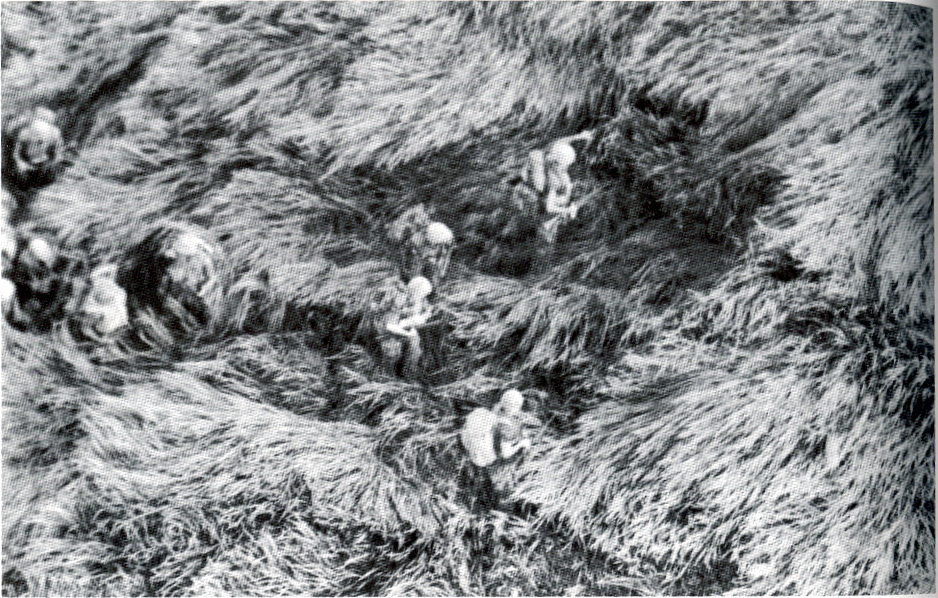
The Vietnam era was a time of intense political uncertainty in both the U.S. and Mexico. The opposition to communism struggled against the opposition to war. In regards to the Mexican corrido tradition, it was widely accepted by scholars and enthusiasts of the artform alike that the tradition was on the outs. Famous followers of the corrido like Americo Paredes argued that corridos had become artificial and far too commercial to retain its previous success. But this is not to say the corrido tradition was completely dead. Two very important areas of concern exist for Mexican culture, specifically in the realm of the corrido: the assassination of John F. Kennedy and the Mexican-American participation in the Vietnam War. Amongst the “trite [and] vulgar ballads” of much of the twentieth century, the corridos that sprang up about Kennedy and Vietnam were proverbial diamonds in the rough. Their sincerity and emotion were refreshing proof that “the corrido tradition could lie relatively dormant in commercial music and still become revitalized as the situation and emotional climate demands” (Dickey).
Kennedy
For many Mexican-Americans, Kennedy was a hero whose assassination made him a martyr for Catholic ideals of the public good. Mexicans identified with Kennedy as a Catholic primarily. This is not to say there were no other reasons why Kennedy complemented the Mexican culture so well, but if there ever were a gateway to American-Mexican rapport, the first Catholic president was definitely it. According to Dan Dickey's The Kennedy Corridos, “Mexican Americans [. . .] saw their own struggles in Kennedy's”, which serves to explain the rush of corridos in response to his death. These corridos are artistic depictions of “many Mexican American’s sentiments for and identification with John Kennedy” (Dickey). All three of the following corridos contain the important formal qualifications of a corrido – discernible rhyme and rhythm and many instances of Duvalier’s formal criteria for a corrido. Though, the rhythm in “América de Luto” and “El Asesinato” is more or less Alexandrine (twelve syllables), proving their recent authorship. The corridos all share a definite propositionality in favor of Kennedy.
One interesting aspect of these corridos is that they display two distinct directions in which the Kennedy corridos divided. Both spend a great deal of time lauding Kennedy as a great man, using many commonly-found Kennedy formulas such as “no te olvidará jamás”, “ha muerto el gran Presidente”, “Fue John Kennedy el gobierno de más fama / defensor en bien de la humanidad”, and “ya te has ido de este mundo muy valiente / lloraremos con el alma y emoción”. The difference is not seen in how they treat Kennedy, but rather how they deal with his morder itself. “América de Luto” and “El Asesinato” both tend to focus on the incident itself and are preoccupied with condemning the “malvado” who committed the act. “Corrido de Kennedy” does mention the assassin, but it spends more time asking for God’s blessing and focusing on the eternity of Kennedy’s name. In any case, whether the corrido is beseeching God or cursing the assassin, it is a record of many Mexican-Americans’ undying devotion to John Kennedy.
Vietnam
The Vietnam War was one of the first wars in which the U.S. army was very widely diversified. No longer was the military composed of anglo men, but rather there were quite a few other nationalities fighting on America's side, spefically Mexican-Americans. So naturally, as with any war in which Mexican-Americans are involved, a number of corridos were written.
These two corridos about Vietnam focus on the soldier’s experience rather than broader-range politics. “Padre de un Soldado” is essentially a prayer in which a father asks God and the Virgin Mary to watch over his son and return him safely from the war. The other, “Corrido de Vietnam” is a first-person reflection on a man’s experiences in the Vietnam War and his pride in being Mexican American. Both stay away from any hard-hitting themes of the politics of humanity that were rampant in discussions in the Vietnam era, but they are by no means neutral. They focus on the honor and safety of the soldier, an evident propositionality in favor of the American side.
Both corridos have uncommon rhythm and stanzaic formulation. The number of syllables in any given line is mostly twelve, though they often have couplets of eight syllables. “Corrido de Vietnam” is very short with only three stanzas (ten lines total), but it gets its point across. They are obviously not the traditional narrative corridos, but in sentiment are obviously corridos. They deal with the same themes as the Kennedy corridos – religion and pride. Though their formal attributes perhaps are not indicative of a traditional corrido, their sentiments are widely accepted as ballad-like. Moreover, Dickey has asserted very well that the corrido tradition has evolved enough since its heyday in the Mexican Revolution that any verse-form widely regarded as a corrido by the general public can be easily counted as part of the corrido tradition. Thus, these corridos fit perfectly well along their more uniform counterparts.